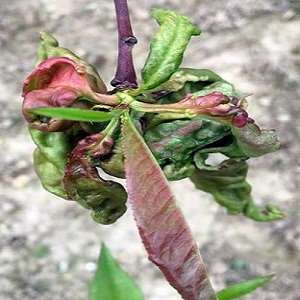Depending on your location, the warm weather over the last few weeks may have pushed some fruit trees along. For disease management, consider applying dormant copper and urea sprays soon.

This winter probably will go down as the winter that wasn’t. Although my schedule is pretty jam packed during the “off season,” there is a restorative affect winter offers when everything is asleep outside and buried under snow. This year, it has felt like the 2016 season rolled seamlessly into the 2017 season without so much as a power nap. Needless to say, when you’re examining leaves for mature apple scab spores in the middle of February, you’re wondering what you did to wrong Mother Nature. In the spirit of facing the music, here are some nuggets of wisdom to help folks get ahead for disease management in 2017:
Time for dormant copper sprays
Spring is here and growers are encouraged to apply dormant copper sprays on apples and pears for fire blight and scab; and on peaches for bacterial spot and peach leaf curl. Since peach leaf curl can only be managed when leaves are off the trees, applications should be made prior to bud swell Growers will want to aim for 2 lb/A of metallic copper: pay attention to the % metallic copper equivalent listed on the label of the copper you use.
Get rid of overwintering scabby leaves
I know it’s the burning question on everyone’s minds: have the apple scab spores started to fly yet? I am very pleased to report: No, we have not detected spores as of February 27. Consequently, there is still some time to get your orchards in shape to prevent apple scab in 2017. Apple scab can be kept in check by reducing the number of available overwintering spores in last year’s leaves present in the orchard through sanitation.
Remember: orchards are self-infecting when it comes to scab since spores can travel about 100 feet.
Options for reducing spores:
- Apply urea sprays (40 pounds per 100 gallons of water per acre) to the orchard floor including the sod row middles. Spores need leaf tissue to survive and urea helps the breakdown of the tissue thereby eliminating the food source for the spores. If urea is applied, your spring nitrogen applications need to be reduced based on the amount of urea applied to the tree rows.
- Shred leaf litter using a flail mower or remove leaf litter by raking, sweeping, or vacuuming. Shredding leaf litter assists the decay of the plant material, as well as aids in the reorienting the leaves, thereby disrupting ascospore discharge.
Source: psu.edu